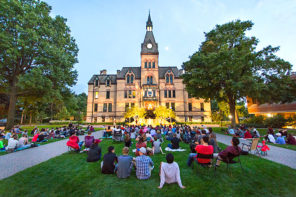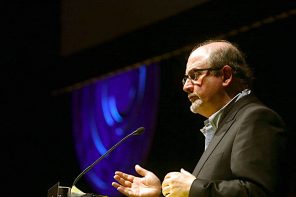The recent arrival of ISIS in the international spotlight has demonstrated once again that there is no easy way to talk about religious extremism and the martyrs, real or imagined, that it produces.
There’s the understandable urge to breathe righteousness and meaning into the deaths of innocents with the powerful language of martyrdom, but there’s also the danger of competitive martyrdom, in which dying for or against a cause is seen as a good unto itself, which inadvertently lends ideological legitimacy to those perpetuating the violence. Can we sufficiently honor those who have been slain by ISIS without invoking such loaded and, dare I suggest, extreme terminology?
The issue is only further complicated when the loved ones of the slain use the term (as the families and associates of slain journalists James Foley and Steven J. Sotloff have in recent weeks). Foley’s mother, Diane, was reported by The Telegraph as saying, “I think it’s symbolic their names James and Steven, both martyrs in our church for love, for goodness…I really feel in their way Jim and Steven are also our martyrs. I just beg the world that they might not have died in vain.”
Similarly, a Reuters report on the Sotloff family’s statement, noted that family spokesman Barak Barfi, “…ended the statement with off-the-cuff remarks in Arabic, saying ‘Steve died a martyr for the sake of God.’” Though it’s not clear whether or not the remarks were approved by the Sotloff family, it has sparked conversation and controversy over the use of the term.
In an article titled, “James Foley and Steven Sotloff were martyrs for freedom, not faith,” Religion News Service columnist Brian Pellot writes, “They were killed for their passports and for their professions, not for their personal faiths. Alleging otherwise only serves to politicize and to polarize an already tense situation by stoking new religious tensions.”
This distinction is an important one for understanding the political significance of these executions, though RNS’ use of the word “martyr” in the title still imbues their deaths with an ideological significance and intentionality that has the potential to elevate the message of ISIS by posturing over and against it. The propaganda of ISIS is heavy with references to martyrdom. For their opponents to use such language is, arguably, to capitulate to their terms.
The reality is that the brutality of ISIS is so devoid of theological rigor it renders martyrdom at their hands arbitrary at best, and impossible to discern at worst. In ISIS country, there may be plentiful propaganda espousing a particular agenda but the murders are entirely senseless. In some places, it’s execution for particular transgressions against a draconian version of Sharia cooked up by ISIS and brutally enforced; in others, it’s the random massacre of civilians, survivors of which will be intimidated by groups that seem more like psychopathic gangs than a sophisticated branch of a military operation. Their violence is simultaneously random and unsettlingly strategic. One cannot help but see their use of crucifixion as bait to enrage Christians in a martyring contest.
But the critical point is that one need not die a martyr to not have died in vain. More important than the circumstances under which countless innocents have died at the hands of ISIS are the circumstances under which they lived. In the cases of Foley and Sotloff, their lives were characterized by a commitment to shedding light on one of the darkest corners of the world where few were brave enough to tread.
In the cases of thousands of civilians murdered by ISIS, we might never gather enough stories from their lives to honor their full humanity sufficiently. But there are trails of evidence left in the aftermath that reveal that they lived much like other people do, experiencing both the pain and promise of being human as members of families and communities.
A collection of photographs by Eric LaForrgue from Iraq—and one specifically featuring the Yezedi people taken in the year prior to their slaughter by ISIS—is one such artifact to which we can turn to see beyond the reign of terror that has ended so many lives. The images tell a story of rich and textured lives, lives better honored with a celebration of the quiet and noble business of living peacefully than with projections of political and religious intentions onto their deaths.





